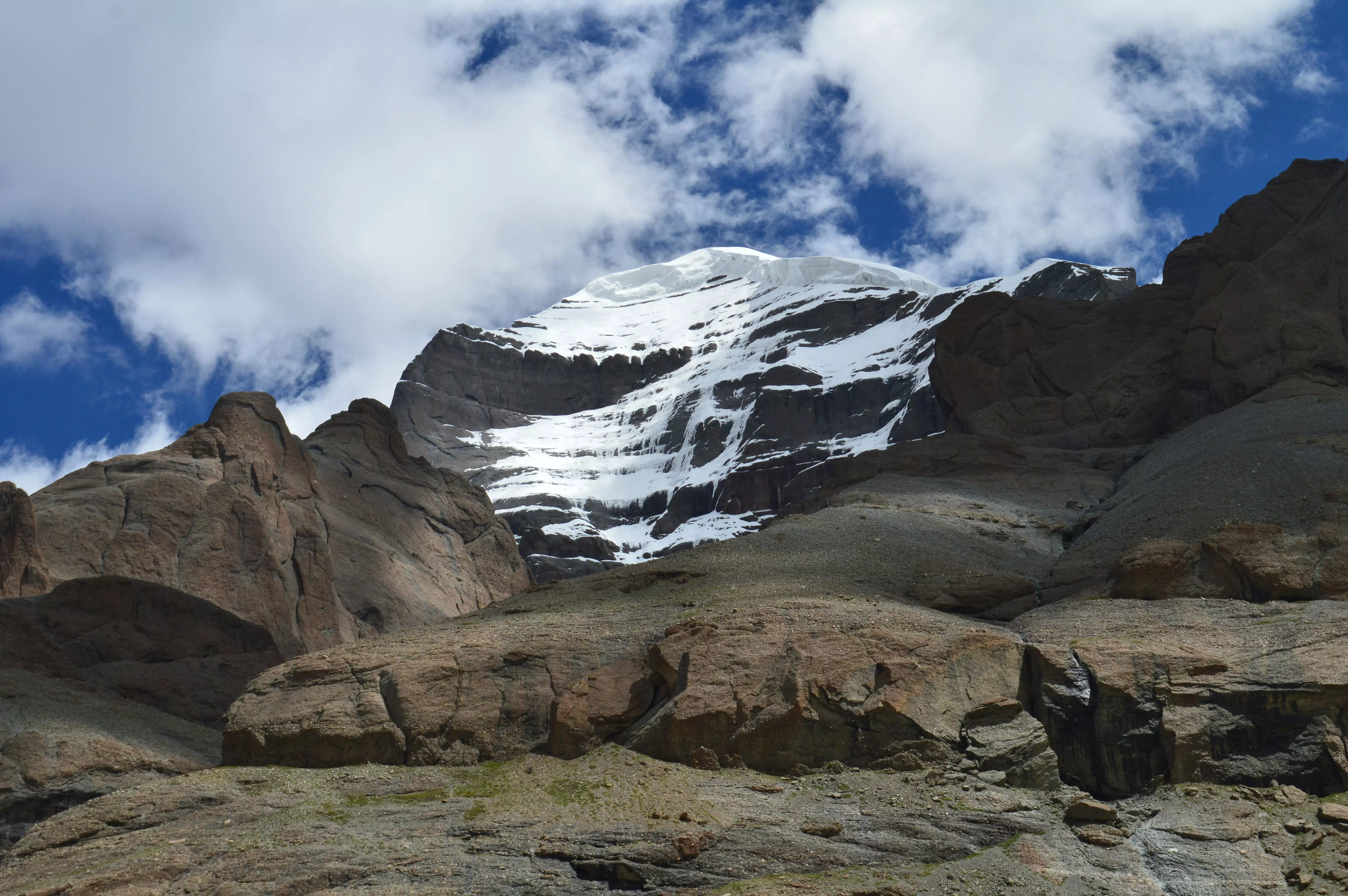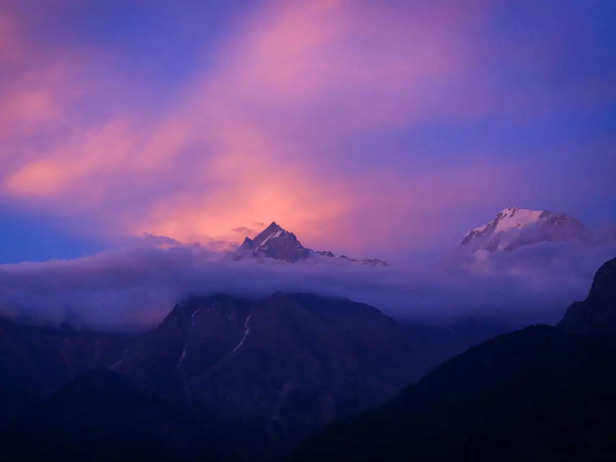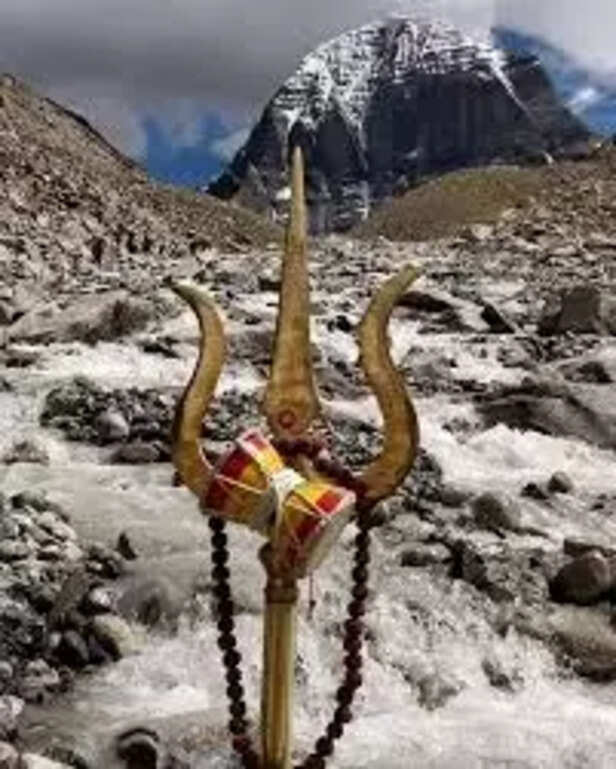The Mystery of Kailash Parvat: Why No One Can Climb It
Nikita Kanyal | Jan 24, 2025, 23:14 IST
Image Source : Pexels
Mount Kailash, the sacred peak located in Tibet, is more than merely a mountain—it is a mystery enveloped in divine legends and inexplicable occurrences. Esteemed as the dwelling place of Lord Shiva and other gods, this holy location continues to be unassailable, not because of its altitude, but due to its spiritual importance and supernatural abilities. With tales of rapid aging and compasses turning erratically, the mountain challenges reason and astonishes climbers. What prevents anyone from attempting to scale Kailash?
Kailash Parvat, reaching a height of 6,638 meters in the secluded area of Tibet, is far more than merely a mountain. To millions worldwide, it represents the most sacred summit, honored by Hindus, Buddhists, Jains, and Bon practitioners. In contrast to Everest or K2, this magnificent mountain has never been ascended. But what is the reason? The explanation can be found in a fascinating blend of spirituality, legends, and mysterious occurrences that envelop Mount Kailash in enigma.
A Sacred Mountain Beyond Conquest

Mount Kailash isn’t just a mountain; it’s a divine abode. Hindus regard it as the residence of Lord Shiva and Goddess Parvati, where they engage in meditation in eternal joy. Buddhists link it to Demchok, a deity that represents ultimate enlightenment. For Jains, it signifies the location where their first Tirthankara achieved liberation. Adherents of Bon, an ancient Tibetan faith, perceive it as the spiritual center of the world.
Given such sacred importance, attempting to ascend Kailash is seen as a clear challenge to divinity. Many hold that scaling this mountain would disrupt the spiritual energy emanating from its summit. The notion of ‘overcoming’ a place that signifies peace and spirituality is incomprehensible to the faithful.
History shows us that those who have dared to climb Mount Kailash faced strange obstacles. In the 1980s, renowned mountaineer Reinhold Messner reportedly sought permission to scale the mountain but eventually abandoned his plans after understanding its spiritual importance. Chinese authorities, too, have officially prohibited climbing Kailash, respecting its religious sanctity.
However, myths tell a more spine-chilling tale. According to Tibetan lore, an early climber who attempted the ascent aged rapidly. By the time he returned to base camp, it was as if decades had passed in a matter of weeks. Could the mountain be operating on a different dimension of time? Science has no answers, but the stories persist.
Unexplained Phenomena Surrounding Kailash

Mount Kailash is often called the "Axis Mundi" or the cosmic axis the point where heaven meets earth. Pilgrims who undertake the 52-kilometer circumambulation, known as the Kailash Kora, share remarkable experiences. Some describe a profound sense of peace, while others note a feeling of being watched. Compass needles behave unpredictably, suggesting the presence of unusual magnetic forces. Even satellite images reveal that Mount Kailash has a striking resemblance to an ancient pyramid, giving rise to speculation about it being a man-made structure from a forgotten civilization.
The surrounding terrain adds to its mystery. Lake Manasarovar, believed to have been created by Lord Brahma, is thought to be a wellspring of purity. Adjacent to it is Rakshastal, a “demonic” lake with saline waters, symbolizing the duality of life. The entire area seems to be a sacred puzzle that defies modern understanding.

Many believe that Mount Kailash is guarded by divine forces that deter climbers. Even those with the most advanced technology cannot overcome these mystical barriers. The mountain’s unique shape, resembling a giant symmetrical dome, has led to theories that it emits powerful energy, influencing both the mind and body of those in its vicinity.
Pilgrims often narrate stories of healing and transformation after visiting the mountain. This divine energy, they claim, acts as a shield, ensuring that only spiritual seekers, not adventurers, can approach the mountain’s mysteries.
Why Kailash is Better Left Unclimbed
In a world fixated on setting records and mastering nature, Mount Kailash serves as a reminder of the boundaries of human aspiration. It conveys that not everything is intended to be controlled. Certain places are sacred, untouched, and should remain that way.
Ascending Mount Kailash isn’t solely a physical endeavor; it represents a spiritual journey. Perhaps the true summit exists not at the top but within the spirit of every pilgrim who travels to this revered land with respect. Kailash Parvat continues to be an enigma, not because it is unreachable, but because it is beyond our comprehension. And perhaps, just perhaps, that is the way it ought to be.
The charm of Mount Kailash lies not in overcoming it but in maintaining its holiness. Its enigmas persist in intriguing both believers and skeptics, reminding humanity of the divine powers that surpass our earthly goals. In a sense, the challenge of climbing Kailash enhances its grandeur, representing the spiritual height we all aim to achieve within ourselves.
A Sacred Mountain Beyond Conquest

Image Source : Pexels
Mount Kailash isn’t just a mountain; it’s a divine abode. Hindus regard it as the residence of Lord Shiva and Goddess Parvati, where they engage in meditation in eternal joy. Buddhists link it to Demchok, a deity that represents ultimate enlightenment. For Jains, it signifies the location where their first Tirthankara achieved liberation. Adherents of Bon, an ancient Tibetan faith, perceive it as the spiritual center of the world.
Given such sacred importance, attempting to ascend Kailash is seen as a clear challenge to divinity. Many hold that scaling this mountain would disrupt the spiritual energy emanating from its summit. The notion of ‘overcoming’ a place that signifies peace and spirituality is incomprehensible to the faithful.
Failed Expeditions: A Warning from the Divine?
However, myths tell a more spine-chilling tale. According to Tibetan lore, an early climber who attempted the ascent aged rapidly. By the time he returned to base camp, it was as if decades had passed in a matter of weeks. Could the mountain be operating on a different dimension of time? Science has no answers, but the stories persist.
Unexplained Phenomena Surrounding Kailash

Image Source : TOI
Mount Kailash is often called the "Axis Mundi" or the cosmic axis the point where heaven meets earth. Pilgrims who undertake the 52-kilometer circumambulation, known as the Kailash Kora, share remarkable experiences. Some describe a profound sense of peace, while others note a feeling of being watched. Compass needles behave unpredictably, suggesting the presence of unusual magnetic forces. Even satellite images reveal that Mount Kailash has a striking resemblance to an ancient pyramid, giving rise to speculation about it being a man-made structure from a forgotten civilization.
The surrounding terrain adds to its mystery. Lake Manasarovar, believed to have been created by Lord Brahma, is thought to be a wellspring of purity. Adjacent to it is Rakshastal, a “demonic” lake with saline waters, symbolizing the duality of life. The entire area seems to be a sacred puzzle that defies modern understanding.
Divine Protection or Cosmic Energy?

Image Source : Pexels
Many believe that Mount Kailash is guarded by divine forces that deter climbers. Even those with the most advanced technology cannot overcome these mystical barriers. The mountain’s unique shape, resembling a giant symmetrical dome, has led to theories that it emits powerful energy, influencing both the mind and body of those in its vicinity.
Pilgrims often narrate stories of healing and transformation after visiting the mountain. This divine energy, they claim, acts as a shield, ensuring that only spiritual seekers, not adventurers, can approach the mountain’s mysteries.
Why Kailash is Better Left Unclimbed
Ascending Mount Kailash isn’t solely a physical endeavor; it represents a spiritual journey. Perhaps the true summit exists not at the top but within the spirit of every pilgrim who travels to this revered land with respect. Kailash Parvat continues to be an enigma, not because it is unreachable, but because it is beyond our comprehension. And perhaps, just perhaps, that is the way it ought to be.
The charm of Mount Kailash lies not in overcoming it but in maintaining its holiness. Its enigmas persist in intriguing both believers and skeptics, reminding humanity of the divine powers that surpass our earthly goals. In a sense, the challenge of climbing Kailash enhances its grandeur, representing the spiritual height we all aim to achieve within ourselves.
